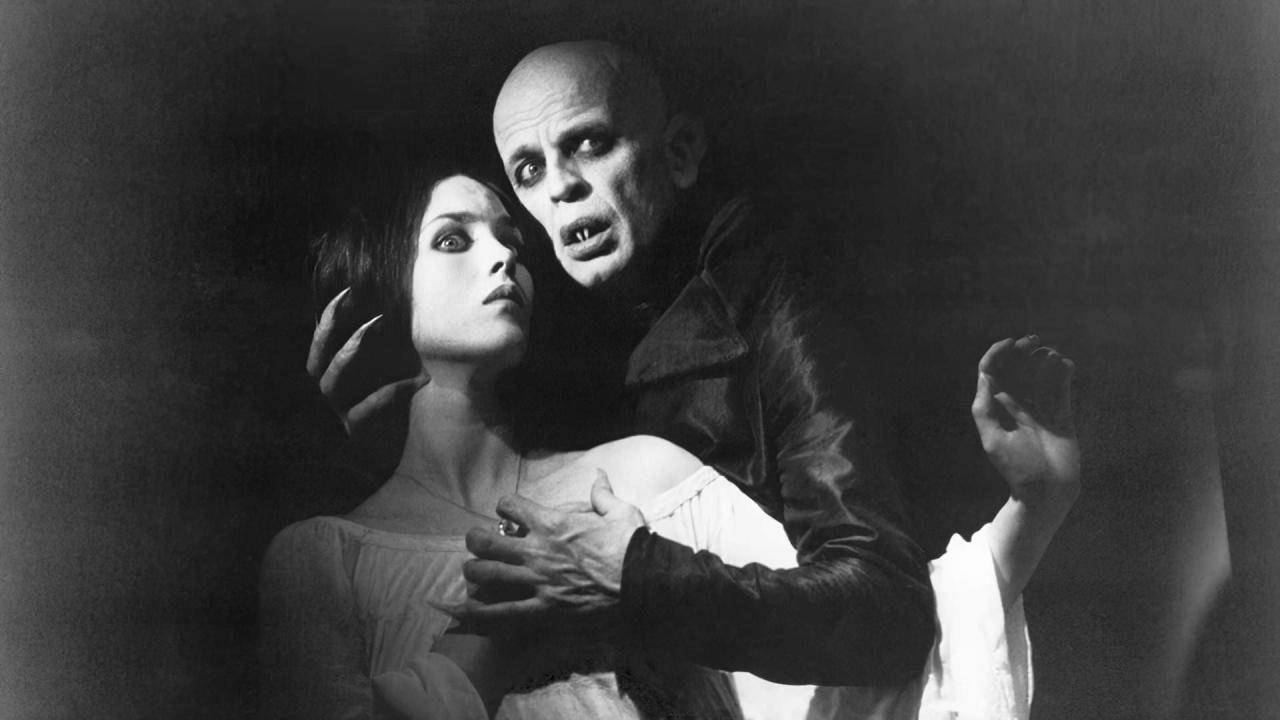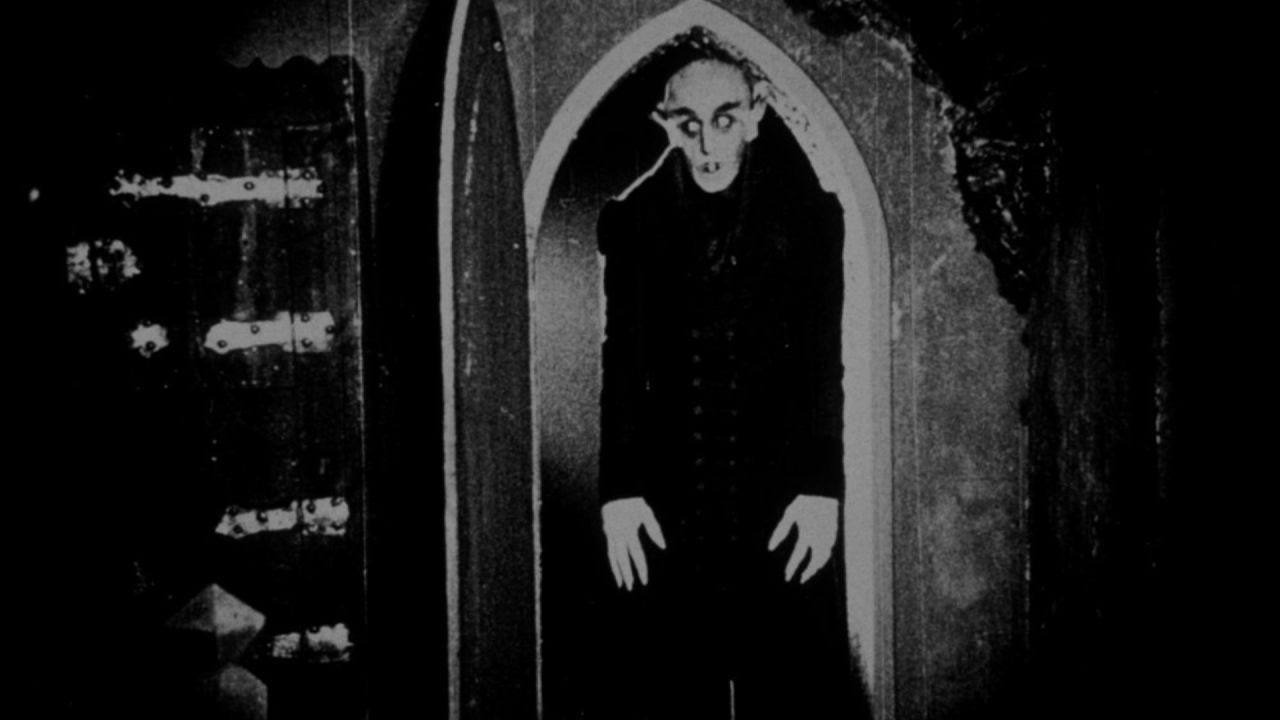Does nosferatu have a post credit scene – Does Nosferatu have a post-credit scene? Horror aficionados and casual viewers alike may wonder about this as the iconic 1922 silent film draws to a close. While the original Nosferatu does not feature a post-credit scene, the concept of such scenes in horror films has evolved over time, leaving room for speculation and creative exploration.
Post-credit scenes have become a staple in modern horror cinema, serving various purposes from teasing future installments to providing closure or expanding on the film’s narrative. In this article, we will delve into the world of post-credit scenes, examining their use in horror films and exploring the potential for a post-credit scene in Nosferatu.
Nosferatu’s Ending
The final scene of Nosferatu is a powerful and iconic moment in cinematic history. It is a scene that has been analyzed and interpreted in many ways, but it is ultimately a scene that is open to interpretation. In this essay, I will explore the various interpretations of the ending of Nosferatu, and I will offer my own interpretation of the film’s final moments.
The ending of Nosferatu is a scene of both horror and hope. Jonathan Harker has finally defeated Count Orlok, and he and his wife Mina are free to return home. However, the ending of the film is also tinged with sadness, as Jonathan and Mina are both aware that they will never be able to forget their experience with the vampire.
Symbolism and Themes
The ending of Nosferatu is rich in symbolism and themes. The film’s final moments can be seen as a metaphor for the battle between good and evil, and they can also be seen as a commentary on the nature of fear.
The character of Count Orlok is a representation of evil. He is a creature of darkness who preys on the innocent. Jonathan Harker is a representation of good. He is a brave and determined man who is willing to fight against evil.
The battle between Jonathan and Orlok is a metaphor for the battle between good and evil. It is a battle that is fought in the hearts of all men. The ending of the film suggests that good will ultimately triumph over evil, but it also suggests that the battle is never truly over.
The ending of Nosferatu is also a commentary on the nature of fear. Fear is a powerful emotion that can paralyze us and prevent us from taking action. However, the ending of the film suggests that we must not give in to fear.
We must face our fears and fight against them, even when we are afraid.
Post-Credit Scenes in Horror Films
Post-credit scenes have become increasingly common in horror movies, serving various purposes and leaving a lasting impact on viewers.
These scenes typically appear after the main narrative has concluded, offering additional glimpses into the story, setting up future installments, or providing a sense of closure.
Examples of Effective Post-Credit Scenes in Horror Films
- The Conjuring (2013): The post-credit scene features a brief glimpse of the Annabelle doll, setting the stage for its own spin-off film.
- Hereditary (2018): The post-credit scene shows a family photo with a disturbing detail, hinting at the sinister forces at play.
- Malignant (2021): The post-credit scene reveals a shocking twist that reframes the entire film.
Purpose and Impact of Post-Credit Scenes in Horror Films
Post-credit scenes in horror films serve several purposes:
- Provide Closure: They can offer a satisfying conclusion to the story, answering lingering questions or tying up loose ends.
- Set Up Sequels: Post-credit scenes often tease future installments, introducing new characters or plot elements that build anticipation.
- Create Ambiguity: They can leave viewers with a sense of uncertainty or dread, keeping the story alive in their minds.
Overall, post-credit scenes in horror films enhance the viewing experience, leaving a lasting impact on audiences and contributing to the genre’s enduring appeal.
Potential Post-Credit Scene for Nosferatu
A post-credit scene for Nosferatu could enhance the film’s impact by providing a glimpse into the aftermath of the vampire’s defeat. It could explore the enduring legacy of Nosferatu’s reign of terror and the consequences faced by those who survived his clutches.
Setting
The scene could be set in the ruins of Orlok’s castle, now abandoned and overgrown with vegetation. The atmosphere would be eerie and unsettling, with a sense of lingering dread.
Characters
The scene could feature the surviving characters from the film, such as Thomas Hutter, Ellen Hutter, and Professor Van Helsing. They could be seen returning to the castle to confront the horrors they experienced and to seek closure.
Events
The scene could begin with the characters cautiously exploring the castle’s ruins. As they venture deeper, they encounter remnants of Nosferatu’s presence, such as his coffin and the bloodstained walls. They could also discover hidden passages and secret chambers that reveal more about the vampire’s history and motivations.
As the characters delve further into the castle, they could encounter a supernatural force that haunts the ruins. This force could be a manifestation of Nosferatu’s spirit or a malevolent entity that has taken up residence in his former abode.
The scene could culminate in a confrontation between the characters and the supernatural force. This could be a physical battle or a psychological struggle, as the characters face their fears and confront the lingering trauma of Nosferatu’s reign.
Connection to the Film’s Narrative
The post-credit scene would connect to the film’s narrative by providing a sense of closure and resolution. It would explore the aftermath of Nosferatu’s defeat and the lasting impact of his evil. The scene would also enhance the film’s themes of fear, mortality, and the power of human resilience.
Audience Reactions to Post-Credit Scenes
Post-credit scenes have become increasingly common in horror films, and audience reactions to them have been mixed. Some viewers find them to be a fun and rewarding way to end a film, while others find them to be unnecessary and annoying.There are a number of factors that can influence audience reactions to post-credit scenes.
One factor is the quality of the scene itself. If the scene is well-made and engaging, it is more likely to be well-received by audiences. Another factor is the timing of the scene. If the scene is placed too early in the credits, it may be missed by viewers who are eager to leave the theater.
Conversely, if the scene is placed too late in the credits, it may be forgotten by viewers who have already started to think about other things.Finally, the content of the scene can also influence audience reactions. Some viewers may find post-credit scenes that are humorous or lighthearted to be a welcome addition to a horror film.
Others may find scenes that are dark or disturbing to be too much to handle after a scary movie.Ultimately, whether or not an audience enjoys a post-credit scene is a matter of personal opinion. However, there are a number of factors that can influence audience reactions to these scenes, including the quality of the scene, the timing of the scene, and the content of the scene.
Positive Reactions
Some viewers find post-credit scenes to be a fun and rewarding way to end a horror film. They appreciate the opportunity to see more of the characters and the story, and they often enjoy the surprise of what the scene will reveal.
For example, the post-credit scene in the 2018 film “Hereditary” was praised by many viewers for its cleverness and its ability to provide a satisfying conclusion to the film.
Negative Reactions
Other viewers find post-credit scenes to be unnecessary and annoying. They argue that these scenes are often tacked on to the end of the film as a way to tease a sequel or to promote another movie. They also complain that these scenes can be confusing or frustrating, especially if they do not provide any closure to the story.
For example, the post-credit scene in the 2017 film “It” was criticized by some viewers for being too vague and for not providing any answers to the film’s many unanswered questions.
Historical Context of Post-Credit Scenes
Post-credit scenes, now a ubiquitous part of the cinematic experience, have a rich history that has shaped their evolution and impact on film storytelling. The origins of post-credit scenes can be traced back to the early days of cinema, with silent films often ending with a “tag” or short additional scene that provided closure or a humorous twist.
Post-Credit Scenes in the 1950s and 1960s
In the 1950s and 1960s, post-credit scenes became more common, particularly in horror and science fiction films. These scenes often teased future installments or hinted at the possibility of a sequel. One notable example is the post-credit scene in Alfred Hitchcock’s Psycho(1960), which shows Marion Crane’s car being pulled out of the swamp, leaving viewers with a sense of unease and anticipation.
Post-Credit Scenes in the 1970s and 1980s
The 1970s and 1980s saw a decline in the use of post-credit scenes, as filmmakers focused more on self-contained stories and character development. However, the rise of the blockbuster in the 1980s led to a resurgence of post-credit scenes, particularly in action and superhero films.
These scenes often teased future installments or provided a glimpse into the characters’ lives beyond the main narrative.
Post-Credit Scenes in the 1990s and 2000s, Does nosferatu have a post credit scene
In the 1990s and 2000s, post-credit scenes became increasingly common, with many films featuring multiple post-credit scenes. These scenes were often used to introduce new characters, set up future storylines, or provide a humorous or unexpected twist. The Marvel Cinematic Universe (MCU) popularized the use of post-credit scenes to tease future installments and create a sense of interconnectedness between films.
Post-Credit Scenes in the Horror Genre
In the horror genre, post-credit scenes have been used to provide a sense of closure, tease future installments, or create a sense of unease or dread. Some notable examples include the post-credit scene in The Exorcist(1973), which shows Regan MacNeil vomiting pea soup, and the post-credit scene in The Conjuring(2013), which shows a brief glimpse of the Warrens’ next case.
Conclusion: Does Nosferatu Have A Post Credit Scene
Whether or not Nosferatu should have a post-credit scene remains a matter of debate. Some argue that it would detract from the film’s classic status, while others see it as an opportunity to enhance the storytelling. Ultimately, the decision lies with filmmakers who may choose to embrace the modern trend or preserve the film’s original integrity.
Clarifying Questions
Why do horror films often have post-credit scenes?
Post-credit scenes in horror films can serve various purposes, such as teasing sequels, providing closure, or offering additional scares.
What are some examples of effective post-credit scenes in horror films?
Examples of effective post-credit scenes in horror films include the stinger in “The Conjuring” and the mid-credits scene in “Hereditary.”
Would a post-credit scene enhance or detract from Nosferatu?
Opinions vary on whether a post-credit scene would enhance or detract from Nosferatu, with some arguing for preservation of the film’s classic status and others seeing potential for storytelling expansion.


